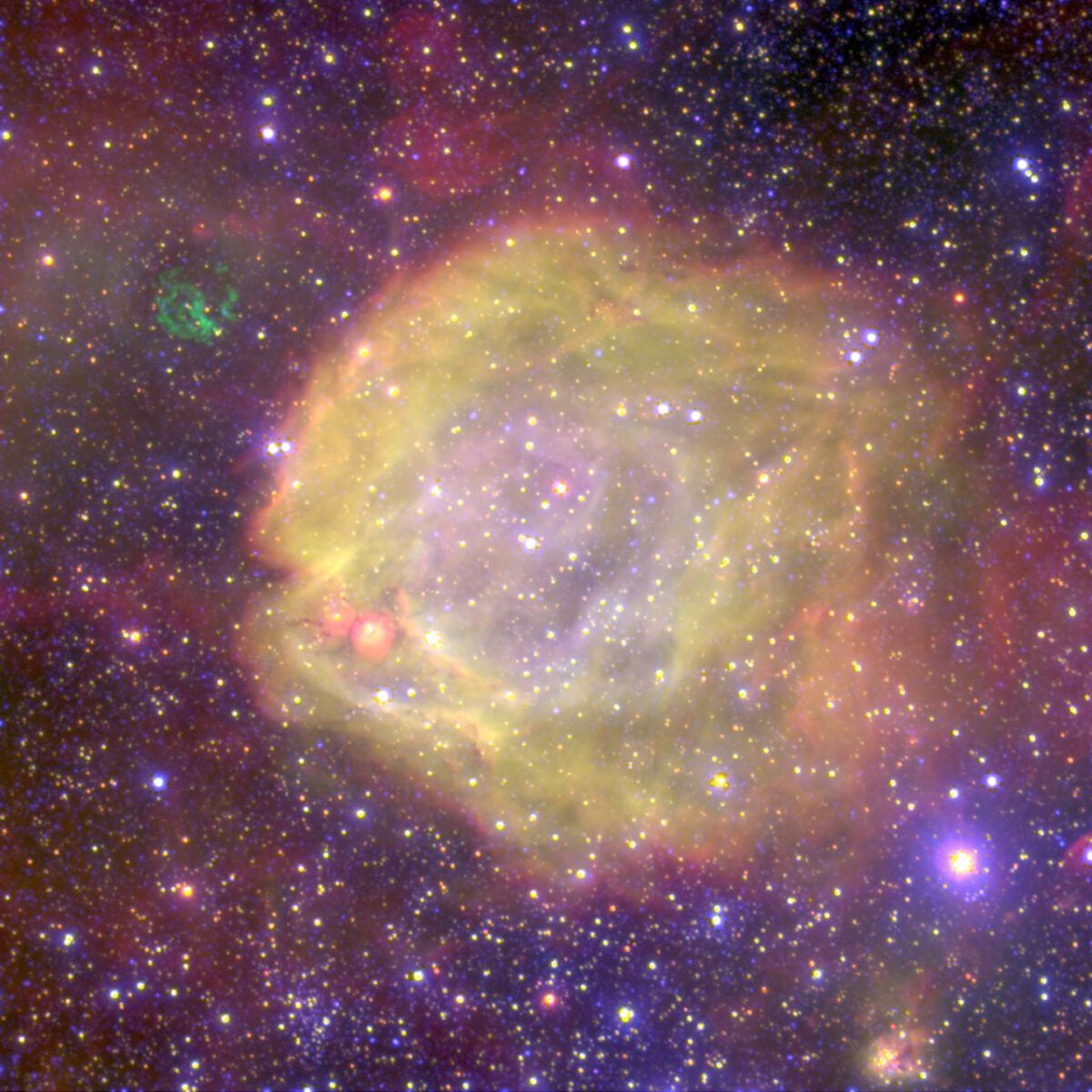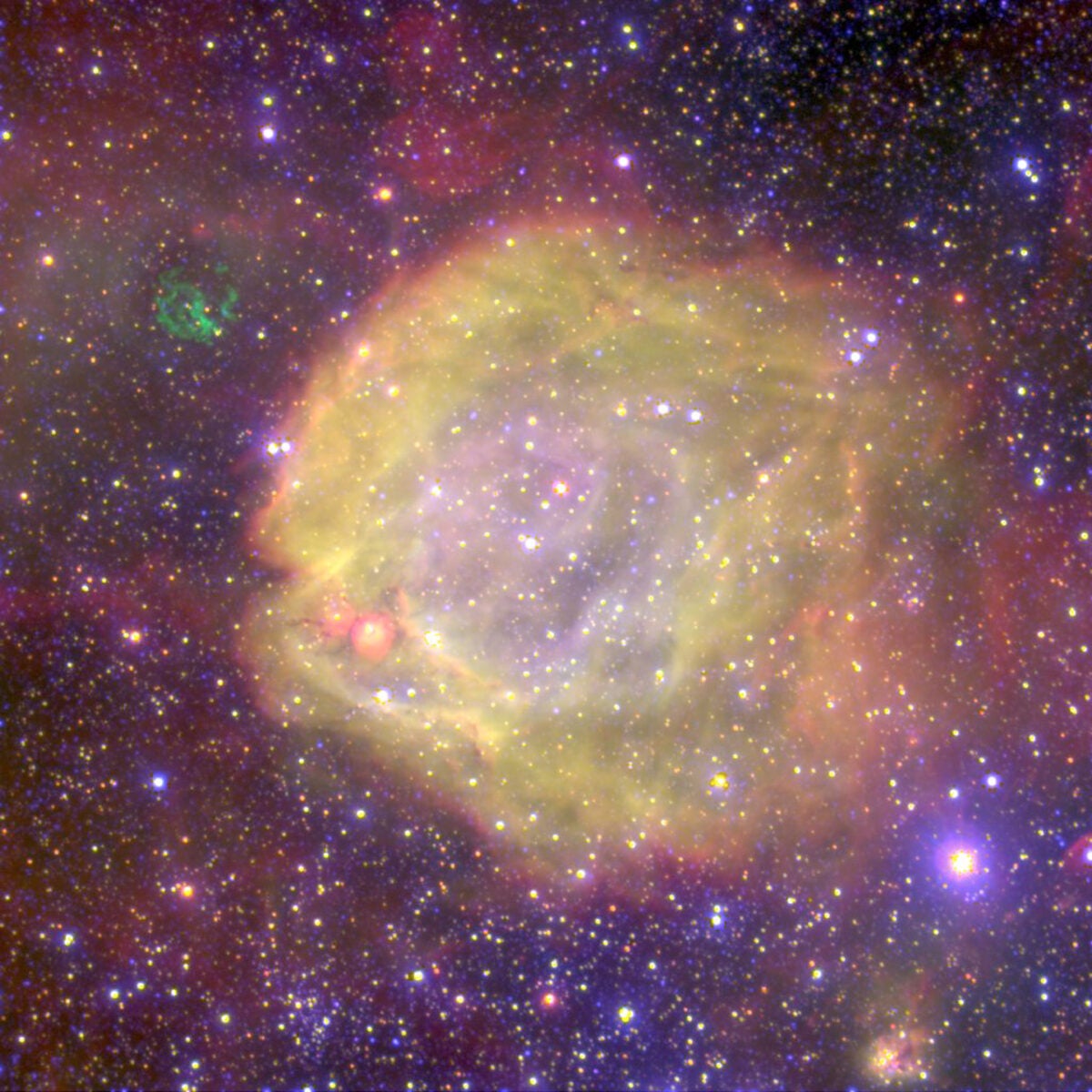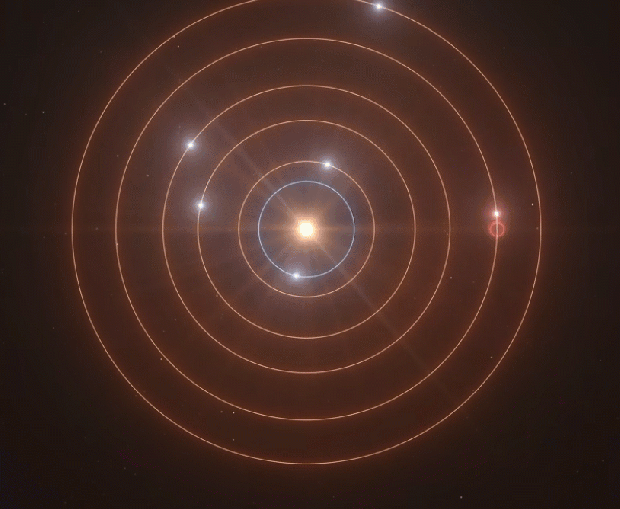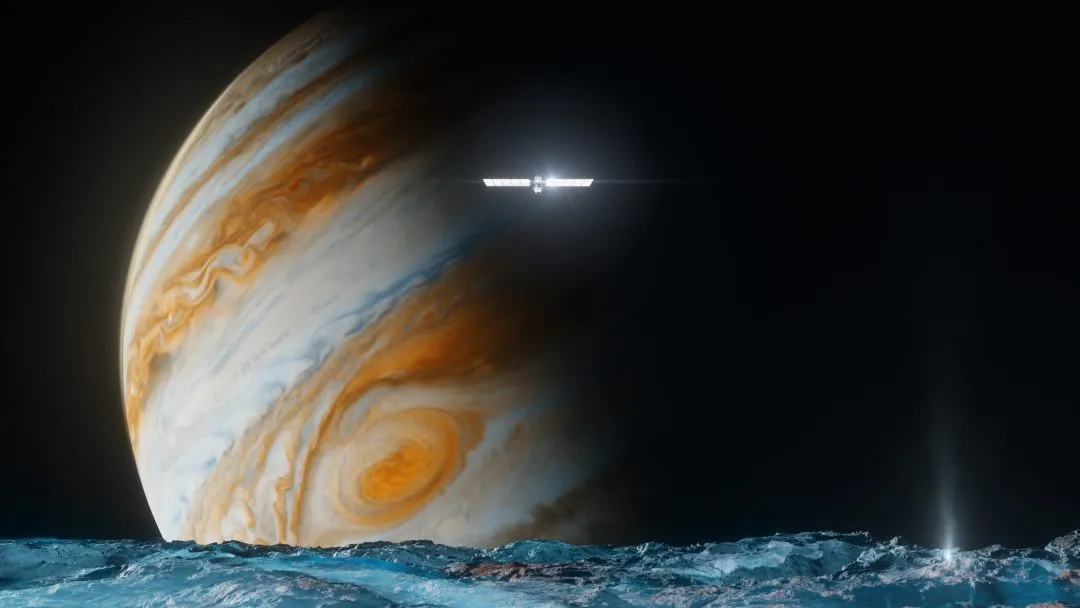
AB7 in the Small Magellanic Cloud is a binary system consisting of two stars — one near the end of its life and one middle-aged — with immensely powerful winds. Simulations show that such winds could help a star survive if its companion explodes in a black-hole-producing supernova. Credit: ESO
The European Space Agency’s Gaia emission has revealed two unexpected black holes orbiting stars like our own Sun. One minor problem: we’re not exactly sure how black holes like this should form. But a team of researchers might have an answer.
Astronomers can’t directly observe black holes. That’s because by definition they do not emit any radiation, and because space itself is just as black, we can’t exactly take a picture. So normally astronomers can gather evidence for black holes only indirectly. The most common method is when black holes orbit a massive star and the black hole’s gravity is able to distort some of the companion star’s atmosphere. As the gas pours down into the event horizon of a black hole, it heats up and emits high-energy radiation.
Recently, however, the Gaia mission provided our first glimpses of an entirely new class of black hole system. The two newly discovered black holes were not found directly. Instead, astronomers scanned through the treasure trove of over 3 billion stellar measurements captured with the spacecraft so far. Within those data they found two systems in which the stars were obviously orbiting around some other object, and yet there was no visible companion.
Based on the orbital characteristics of those stars, the hidden companions must have a mass around eight to nine times that of the Sun. The only kind of astrophysical object that fits that description is a black hole.
But these two black holes, dubbed BH1 and BH2, pose a fun astrophysical challenge. Their stellar companions are roughly the same mass as the Sun, and they also have roughly the same amounts of heavy elements. But they find themselves orbiting these black holes with very long, elongated wide orbits.
Simply put, these kinds of systems shouldn’t exist. To make a black hole you need to start with a massive star. But at the ends of their lives, massive stars are incredibly unstable, ejecting fierce winds and expanding into red giants. When this happens a smaller Sun-like companion usually loses out. Sometimes the more massive star swells so large that its outer atmosphere envelops the smaller star, causing it to merge with the black hole. In other cases, the ejection of material causes the smaller star to simply be kicked out of the system altogether. And in some cases so much material pours onto the smaller star that it transforms into a more massive one.
Either way, astronomers don’t expect to see small stars orbiting black holes. But that’s exactly what the data are revealing, so astronomers are forced to come up with a solution. Recently, a team of astronomers did just that in a paper submitted to the journal Astronomy & Astrophysics.
A path to survival
To examine the mysterious case of BH1 and BH2, they turned to computer simulations. The group wanted to investigate if there were any scenarios at all wherein a massive star could end its life and become a supernova while a smaller companion remained intact.
The clue is in the metallicity, which is an term for the amount of heavy elements inside a star. For both BH1 and BH2, the smaller stars have relatively high metallicities. So it stands to reason that their long dead companions also had high levels of heavy elements.
Using a sophisticated computer simulation code that tracks the evolution of stars, including their interiors and material that escapes their grasp, the astronomers found a certain special class of stars that could explain this kind of system. If the stars are massive enough, at least 80 solar masses, then their high metallicities means that they would be able to transfer a lot of internal energy into incredibly strong winds. In fact, these winds could be so strong that when the star swells to become a red giant, it doesn’t become as enlarged as it otherwise might. All this means is that there is an efficient pathway for supergiant stars to become moderately-sized black holes like BH1 and BH2.
Next, the astronomers specifically examined whether it was possible for a small companion to survive the onslaught of ferocious winds without becoming destabilized. If it could, then a pathway coulkd exist for the larger companion to transform into a black hole but allow for a sun-like companion to exist.
Not only did the astronomers find that this was possible, but they found that it could be a relatively common result. In other words, we shouldn’t be surprised by the existence of systems like BH1 and BH2. The astronomers behind the study suspect that there may be hundreds of such systems lurking in the existing Gaia data that we have yet to uncover.
To test this scenario, the team suggests continuing the hunt for more of these strange binary systems, paying special attention to the elongation of their orbits.
These new observations and the proposed solution show us just how rich and complex is stellar evolution. With every passing year, astronomers learn more about how black holes can form and exist, teaching us about the formation of stars, the evolution of solar systems, and the future of star formation itself.



